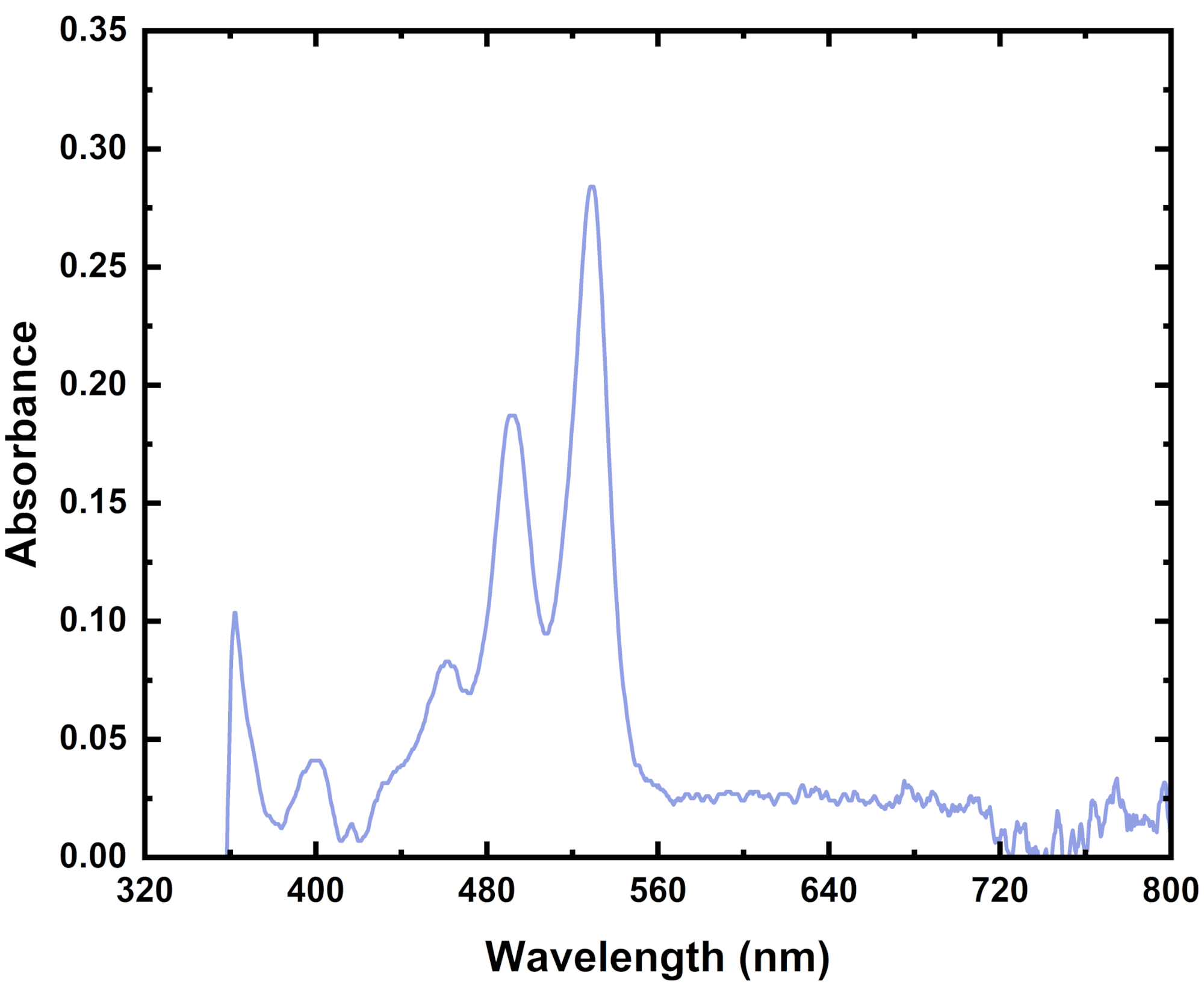Negative Absorbance: Can Absorbance Ever Be Negative?
or 
In general, you should not measure negative absorbance values for any sample. This in unphysical.
Absorbance measurements come from transmission measurements where light that passes through your sample is collected by a measurement system, such as a USB spectrometer or spectrophotometer. This measured light is then compared to a reference spectrum. Absorbance is related to transmission through the following equation:
Here, we can see how absorption relates to transmission, therefore to the relative intensities of incident light. Here, I is the intensity of light at a particular wavelength measured through the sample and I0 is a reference intensity measurement. A reference measurement is taken without a sample in place or using a "blank" reference material or sample. This reference could be:
- A clean uncoated substrate
- An empty cuvette
- A cuvette containing the solvent used in the sample
This reference measurement should represent the maximum transmission possible within your measurement system. Materials using quartz glass are recommended as they are smooth and can have low transmission in the UV.
Using this equation, you can see that if absorbance is negative, it would imply that the amount of light passing through your sample is greater than the amount of light incident on your sample. In other words, a negative absorbance value has no physical meaning.
Why Are You Measuring Negative Absorbance?
There are a number of reasons you could be reading negative absorption:
- Emission from the sample: It's possible that your sample is emitting light, leading to unexpected contributions to absorbance measurements.
- Changes in system configuration: Variations in equipment setup between measuring the reference material and your sample can affect the recorded intensities, resulting in negative absorbance readings.
- Adjustments in measurement settings: Modifying parameters, like the integration time, without retaking the reference measurement can impact your readings. Longer integration times may yield larger signals compared to the reference light, as the spectrometer will be collecting light signals for longer.
- Dilute samples: In cases where the sample is highly diluted, the absorbance readings through the sample may closely resemble the reference readings, which could lead to slightly negative absorbance measurements.
To troubleshoot negative absorbance measurements, the first thing to ask yourself is: when did you take your last reference measurement? If you change any measurement parameters or your equipment set up is adapted at all, you should retake your reference measurement with these new parameters. You can also normalise your absorbance measurements to overcome this effect. You will not be able to take any quantitative absorbance values from these normalise measurements, but you can compare absorbance curve shapes. For example, you can assess absorbance edge shifts or calculate band using normalised graphs.
Example: Negative Absorbance Due to Integration Time
Consider this graph, showing absorbance measurements on perovskite thin films. An initial reference measurement was taken of a quartz substrate, then an absorbance curve was measured of a perovskite thin film. Both used a short integration time of 50 ms. However, this measurement is very noisy.
By increasing the integration time, the signal-to-noise ratio improved, enhancing measurement quality. However, not retaking the reference measurements for each new integration time results in a down-shift of the absorbance spectrum, leading to negative absorbance readings. Higher integration time means the spectrometer is collecting photons for a longer time period. This increases the measured intensity I, and at some point, the measured light intensity through the sample becomes larger than the reference intensity I0. This gives the impression that more light is transmitted through the sample than is incident on it, which makes the measurement unphysical.
USB Spectrometer

Learn More
 Absorbance Measurement
Absorbance Measurement
Absorbance measurements are crucial in many areas of scientific research. This article describes how to take an absorbance measurement using an optical spectrometer.
Read more... UV-Vis Spectroscopy Troubleshooting
UV-Vis Spectroscopy Troubleshooting
UV-Vis spectroscopy (or optical spectroscopy) is a simple, versatile and critical tool for sample characterization. It is the most common type of spectroscopy, and a powerful method for analyzing material properties, allowing scientists to study a material's molecular properties, structure, and behavior. UV-Vis spectroscopy can also be used to monitor reactions, identify materials for certain purposes and to investigate the molecular structure.
Read more...